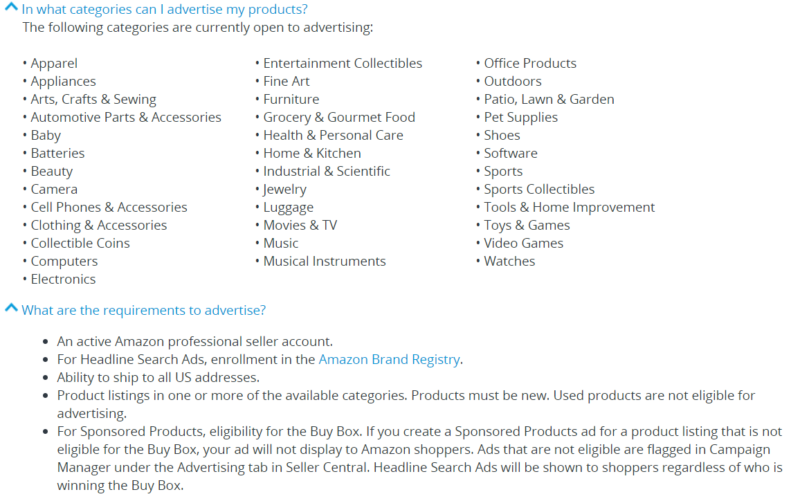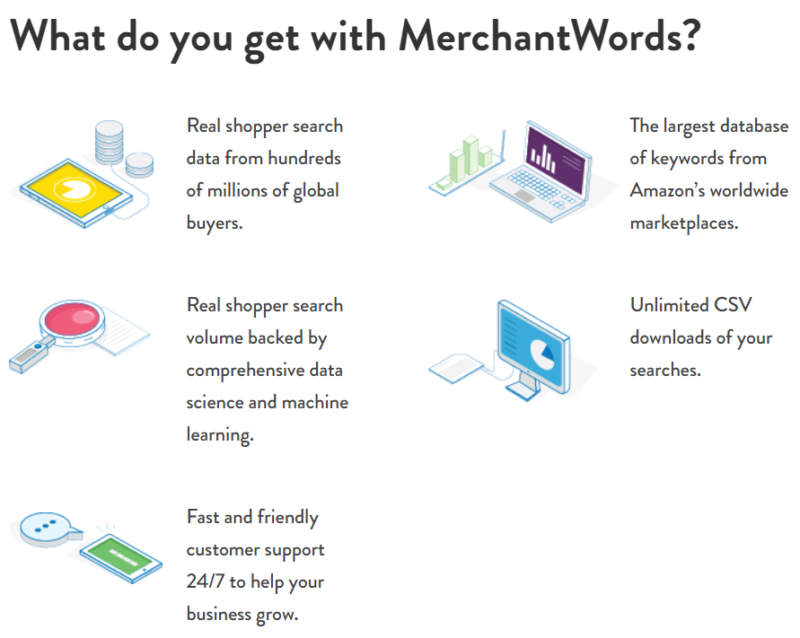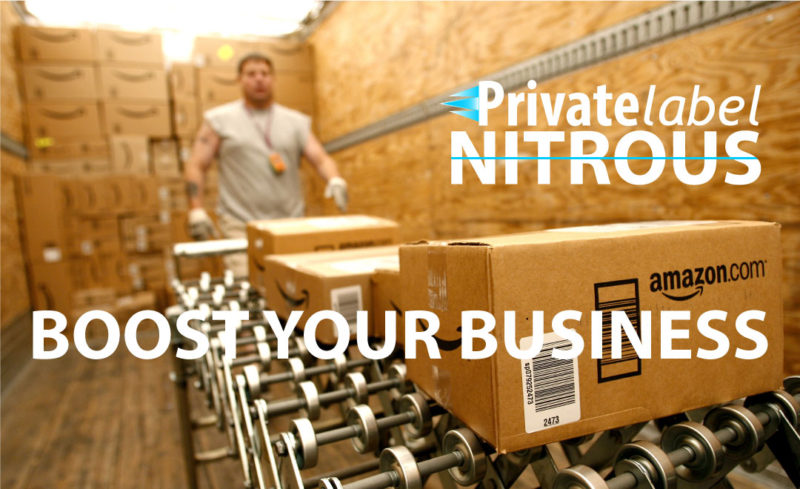Product & Lifestyle Photography for E-commerce
A Guide To Crafting [Successful] Amazon Sponsored Ads
Amazon has become the indisputable one-stop shop for e-commerce shopper and sellers. Wherever you are in your e-commerce journey, if you’re not seeing positive results from Amazon’s Sponsored Ads…are you tired of asking yourself, why? The TRUTH is that Amazon’s advertising platform should be included in your overall product launch and competitive strategy from the beginning. If you’ve been having problems finding that magic formula that results in Sponsored Ads being a boost to your bottom line instead of a massive money pit, you may just be one optimization element away from achieving consistent low ACoS sales via Amazon Sponsored Ads.
First off, let’s put Amazon Sponsored Ads into perspective and contrast it with the original PPC go-to platform – Google AdWords. While AdWords is a very useful advertising platform, it’s nature includes one more unnecessary step between the buyer and their purchase. One of the most significant benefits of advertising on Amazon is that buyers already have the intent to fulfill a need when they visit the site. 9 times out of 10 their goal is to purchase a product. There could be a strong case made that searchers on Amazon have a greater intent to purchase than searchers on Google. This being because their whole purpose for visiting an e-commerce platform such as Amazon is to (you guessed it) purchase. Compare that figure to the numerous other reasons one might search something on Google (Research, comparison, curiosity) In fact, a 2016 survey of 2,000 consumers found that 55% of people completely skip Google altogether, and instead begin their online shopping searches directly on Amazon. Ads directly on Amazon are starting to sound a little more important now, right?
If you’re going to advertise a product, it should be on the sales platform you’re using. In this case, if your target sales channel is Amazon, then you’ve really got to become a master of Amazon Sponsored Ads to capture those fresh searches that are no longer going to Google. Marketing and driving sales is the most important job of any private label brand owner / manager who is handling Amazon as a sales channel – said plainly, you need to either be an expert on Sponsored Ads or you need to hire an expert to focus on this for you. If you’re a new Amazon seller, you might be completely lost, but don’t worry – in this article we’ll break down the basics of creating, managing, and optimizing Sponsored Ads step-by-step so that you (if you choose to spend the required time on this paramount Amazon-sales driver) can become an expert.
Let’s get started!
What Are Sponsored Ads?
Amazon Sponsored Ads is a tool that exists within the Marketplace, used to drive traffic to Amazon detail pages. Sponsored Ads can be compared to image ads – similar to Google Adwords “Display Ads.” However, the nice thing is, Sponsored Ads actually pop up in search results either above, below or within the overall results, as well as on other products’ detail pages. This is beneficial to sellers because the ads almost entirely blend in with the rest of the listings. When properly optimized, potential buyers aren’t discouraged, or off put, believing they are being misled by an ad. Rather, they are able to view the most relevant (and hopefully with the hottest features that you’ve added during your product design process) products available in relation to the words they chose to type into Amazon’s search bar!
Logistically, Sponsored Ads is built to use keywords to target searches. Ads run on a pay-per-click (PPC) platform where the seller controls the bid they’re willing to pay given the opportunity. The seller of course then only pays the fee if their ad is actually clicked on. Once your ad campaign is created, you’re also able to control the daily budget, campaign duration, which products are featured, etc. Sponsored Ads are extremely versatile, depending on your seller-goals. Campaigns can be built to launch new products, or even feature seasonal / in-demand current products.
Amazon Sponsored Ads can be used for the following categories, as long as the below conditions are met:

Understanding Campaign Methods
Now that the overall basis of Sponsored Ads is explained, it’s time to dive into the different campaign types available to advertise.
There are two ways to build and manage your campaigns within Sponsored Products: Automatic vs. Manual
Automatic campaigns: Amazon does the heavy lifting by targeting ads to all relevant customer searches based on the available product information. This method also allows sellers to make adjustments to the campaign more smoothly.
Manual campaigns: are completely built by sellers in which they manually set keyword options for Sponsored Products.
Seller Suggestion: It’s important to recognize that automatic targeting means sellers get to skip past the process of selecting keywords. Meanwhile, in the process, automatic targeting also removes the higher level of control associated with manual targeting. Manual targeting’s advantage is that it lets sellers specifically choose the keywords for the ad.
If you understand the concepts of what Sponsored Ads are, and the two different options for utilizing them, the “How-To” portion comes next:
Begin with Automatic Campaigns
Starting off, it’s best to begin with Automatic Campaigns to aid you in understanding which products are eligible, and should be ran. Once your automatic campaigns are running well, those efficient keywords and products can be transferred into a manual campaign.

Like we went mentioned above, with automatic campaigns Amazon will target your ads to all relevant customer searches based on your product information.
Yet, sellers sometimes will fall into common mistakes that won’t allow their campaigns to function efficiently. Often, sellers will bid higher on products they think will do well, or want to do well. They will even put the products they have in mind into multiple ad groups, regardless of their performance. Don’t play a guessing game with your selection! It’s important to analyze your customer search term data so you’re able to make strategic decisions – this includes which products and keywords to bid higher or lower on. Utilize the Search Terms Report for Sponsored Products for your keyword harvesting. These reports will be especially useful when it comes to transferring those “good” performing keywords from your automatic campaigns into your manual. Overall, if your Search Terms Report doesn’t become your BFF throughout this advertising process — you’re doing something wrong.
Seller Suggestion: Remember, your initial automatic campaigns should be viewed as your “test” campaigns, and therefore, should be run with a low budget to avoid wasting valuable advertising dollars. Once your campaigns have run for a couple weeks, check out your results to find the search terms people used to retrieve your ads. (Again, those ideal keywords.) Those search terms should then be used in your manual targeting campaigns (we’ll go over creating these later.)
Use Keyword Theory
Identifying the right keywords to use for your Amazon Sponsored Product ads is an essential piece to the ultimate success of your advertising campaigns.
In the past, Amazon Search Term Reports provided sellers with data that included impressions, clicks, and sales for each search term listed. It also indicated the exact product SKU associated with the search term. As you can imagine, this was extremely valuable data for sellers. However, Amazon updated the report so it no longer identifies which product is associated with which search term. In example, although sellers would still see in the report that the term “iPhone Case” is converting well—Amazon no longer identifies which SKU it is associated with. Inevitably, this change to the report has made it more difficult for sellers to identify product search term relationships.
Pro-Tip: You can circumvent Amazon’s lack of transparency by creating campaigns for only one SKU and including that SKU when you name the campaign, ad group and ad.
Even if more than one SKU is included in a campaign, the report is still an extremely valuable asset when it comes to optimizing your keywords. You’re able to see which keywords are converting well, and which keywords customers are searching blindly. If you’re fairly familiar with your products (you should be as a seller), some time and deductive reasoning should be all you need to match up search terms (later used for keywords) to the corresponding products. For example, if “iPhone case” and “baseball” are converting well, logically, you would match those keywords up with the ad groups containing iPhone related accessory products, and the other containing baseball item products. This method does take more time but if your initial automatic campaigns were not grouped by theme, the data gathering efforts can still be salvaged by using the method described above.
 Another way to scout out potentially useful keywords is to purchase a service such as MerchantWords. MerchantWords is an Amazon keyword tool that provides the estimated search volume on Amazon for whatever keyword you search. This tool shouldn’t be your main justification for selecting a keyword to be used. But, in conjunction with the automatic search term report method, it is another reliable tool that can aid in positioning your campaign above the competition.
Another way to scout out potentially useful keywords is to purchase a service such as MerchantWords. MerchantWords is an Amazon keyword tool that provides the estimated search volume on Amazon for whatever keyword you search. This tool shouldn’t be your main justification for selecting a keyword to be used. But, in conjunction with the automatic search term report method, it is another reliable tool that can aid in positioning your campaign above the competition.
Seller Suggestion: It’s important to keep in mind that Amazon avoids showing ads that don’t appear to be related to their respective landing pages. To avoid your ads from not showing up, make sure Amazon recognizes your product listings are relevant to your ads. Do this by adding your target keywords into the copy of your product listings. The keywords should naturally flow with your listing, and not appear forced.
Bonus Seller Suggestion: MerchantWords can be used for copy keyword selection too!
Once you have your groups of keywords selected, it’s time to use your previous data to begin creating manual campaigns.
Build Your Manual Campaigns
After you’ve identified your top keywords (indicated by high impressions, clicks, sales, etc.) the next step is to build your manual campaigns by transferring those keywords. Keep in mind, keyword harvesting is a continual process. You want to make sure you’re frequently running the search term reports to pick up on new trends.
All things considered, your manual campaigns still may not perform well initially. Keywords that are considered highly relevant may not get many impressions, but there’s a reason for that. Amazon takes many things into consideration when running your Ads. Even though the specific keyword may be relevant to your product, they’re also considering sales history, velocity, reviews, etc. It’s no shock that Amazon is extremely customer focused. Their goal is for the buyer to have the best experience that they can provide. Therefore, they may not show your ads even if they’re relevant, based on the lack of criteria above. Keep pushing on! If your data is good, your products may just need a few reviews to get that first positive week of Sponsored Ad driven sales – don’t be discouraged right away.
Choose the Appropriate Keyword Match Types
Along the way, your keyword match types are a crucial part of the Sponsored Ad process that needs to be considered. Keyword match types allow sellers to fine-tune which customer search terms their ads may be eligible to show against. Sellers are able to choose from broad, phrase, and exact match types. According to Amazon, selecting a broad match keyword will give the ad group the most traffic exposure. Conversely, the phrase and exact match may restrict traffic to a more precise target audience.
Broad Match – this match type provides ads the widest level of traffic exposure. A customer search term will match if it contains all the keyword terms or their synonyms. The search terms can be provided in any order for a match to occur.
Phrase Match – for this type, the customer search term has to contain the exact phrase or sequence of words. Like we mentioned, this type is more restrictive but is more likely to result in a greater accuracy of relevant placements for your ads.
Exact Match – in exact match, the buyer’s search term must exactly match the keyword for the ad to appear. Exact match is the most restrictive, but of course, will be the most appropriate to the buyer’s search.
Use an Analytical Bidding Approach
As mentioned, a bid is the highest amount a seller is willing to pay for a buyer click to view the ad. When formulating bidding strategy, Advertising Cost of Sale (ACoS) is a metric advertisers should follow closely. ACoS is expressed as a percentage of the total ad spend divided by the sales. A good benchmark is to try and keep your ACoS between 15-20% (with lower always being better) Amazon will provide a suggested bid per keyword that you can always start off with. Bids should then be adjusted based on the performance along with the ACoS. If you notice certain keywords are driving clicks—but not converting, those are considered inefficient, and may need to be removed from the campaign. In another example, if a keyword is gaining a significant amount of traffic, but the ACoS is 50%, consider lowering the bid gradually to try and bring the ACoS down, but still maintain the traffic flow. For an ACoS way below 20%, try raising the bid to increase clicks, and gain even more traffic! It’s a delicate balance, that will constantly need to be adjusted.

Cost-Per-Click (CPC) is another metric to keep in mind for each keyword term. For example, if the average CPC is .55 for the keyword term, and your ACoS is 40%, you might consider lowering your bid to .25 to move a little closer to your ACoS goal of 15% – 20%.
Seller Suggestion: Not all your products will have the same profit margin; therefore, you shouldn’t bid the same for all of your products. A good strategy is to choose the keywords that have the potential of bringing the most value and bid higher on them.
Product Optimization
In addition to managing bids, your products should also consistently be monitored in your ads. Consider whether or not there are additional products in your store you may want to test. These products could be added to your campaign on a tentative basis. Additionally, think about removing poor performing products from your campaigns altogether. Inefficient advertised products can weigh heavy on your ACoS just as much as keywords!
Always take into account products that are affected by seasonality, that you might have accidentally overstocked, or that are nearly out of stock. A well-functioning campaigning could cause your products to fly out of the warehouse. There’s nothing more disappointing that missing out on potentially lost profit.
Seller Suggestion: Advertising products with zero reviews tends to be a bad idea. Customers are less likely to purchase products with no reviews, even if the impressions are there, it’s not going to convert. Why waste your advertising dollars?
Advanced Notes
Though all the information in this article should be very helpful for those who are attempting to become Sponsored Ads experts, the fact remains that success is often only found after practitioners with years of experience are able to identify one of the many nuanced factors that could be holding a Sponsored Ad campaign behind. Seeming tiny details like the way the main photo poorly portrays your product, or misplaced / mis-positioned keywords inside the product title may be killing your click through rate and may represent a permanent barrier to Sponsored Ads success. It’s possible that you might have applied all general principles correctly within the ad platform, but because of a misstep in the launch process or some unresolved seller performance stat, you might have the Amazon algorithm working against your entire account – not just one product! If you’ve read through this entire article and you’ve read nothing new and you’re still wondering why your Sponsored Ads just plain suck, you may be in need of something more than just tips & tricks – experienced professionals.
Takeaway
Amazon Sponsored Ads may feel daunting for even the savviest of e-commerce sellers. Keep in mind the following things when beginning Sponsored Ads:
- Begin with automatic campaigns
- Use keyword theory
- Build your manual campaigns
- Choose the appropriate keyword match type
- Perfect your bidding approach
- Don’t forget to optimize your products
- Don’t neglect your campaigns! Run analysis on them at least once a week


 Amazon Sponsored Products will continue to be one of the most powerful tools for driving discoverability and incremental sales for Amazon sellers – make sure you’re a part of the wealth!
Amazon Sponsored Products will continue to be one of the most powerful tools for driving discoverability and incremental sales for Amazon sellers – make sure you’re a part of the wealth!